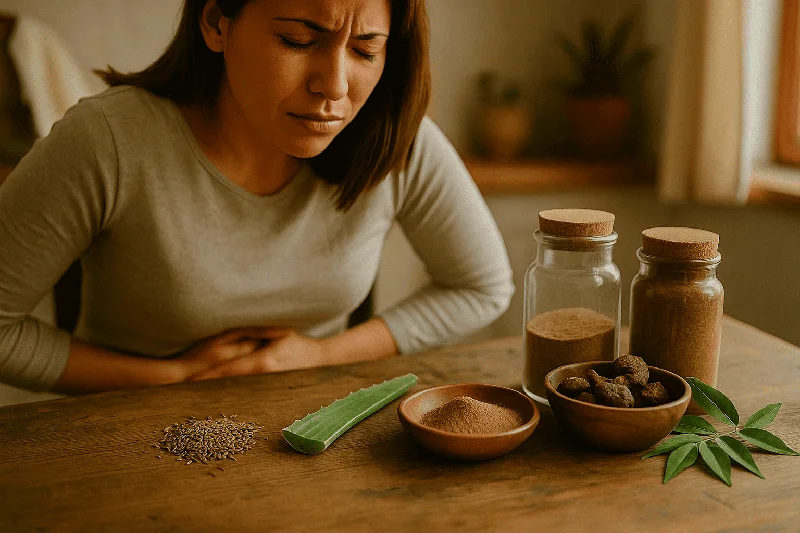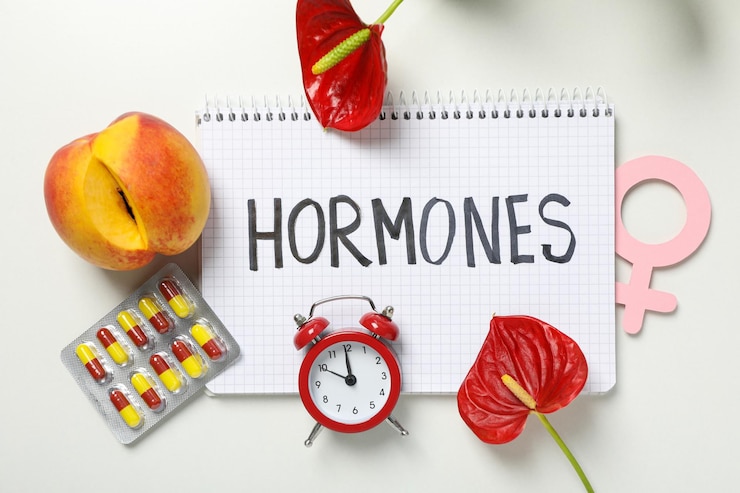Ask Ayurvedic doctor a question and get a consultation online on the problem of your concern in a free or paid mode. More than 2,000 experienced doctors work and wait for your questions on our site and help users to solve their health problems every day.
Shop Now in Our Store
Rajapravartini: Ayurvedic Insights for Menstrual Well-Being

Menstrual disorders and hormonal imbalances affect millions of individuals worldwide. From discomfort during menstruation to irregular cycles, these concerns can impact both physical and emotional well-being. In traditional Ayurvedic medicine, rajapravartini (often referred to in formulations like Rajapravartini Vati) has long been used for addressing menstrual irregularities and promoting uterine health. But does scientific evidence back its purported benefits? In this comprehensive article, we delve into the origins, traditional indications, scientific research, and best practices surrounding rajapravartini, providing a balanced perspective rooted in evidence-based healthcare.
Table of Contents
-
What Is Rajapravartini?
-
Historical and Ayurvedic Context
-
Mechanisms of Action in the Body
-
Modern Research and Evidence
-
Practical Applications: Common Uses in Healthcare
-
Potential Side Effects and Precautions
-
Frequently Asked Questions (FAQ)
-
Conclusion and Key Takeaways
1. What Is Rajapravartini?
Rajapravartini is a term originating from Sanskrit, often translated as “that which promotes the flow of menstruation.” In Ayurvedic practice, this concept is tied to the idea of maintaining healthy and balanced menstrual cycles. Over time, this term has come to be associated with specific herbal formulations—most notably, Rajapravartini Vati—designed to support uterine function, alleviate menstrual discomfort, and encourage regularity.
Key Takeaways
-
Primary Focus: Menstrual regularity and uterine health.
-
Formulation: Typically includes herbal components aimed at soothing or stimulating the female reproductive system.
-
Traditional Usage: Relies on balancing the doshas (Vata, Pitta, Kapha) in Ayurveda to address underlying imbalances.
2. Historical and Ayurvedic Context
Ayurveda, a system of medicine originating in India over 3,000 years ago, places significant emphasis on reproductive health. According to Ayurvedic texts (such as the Charaka Samhita and Sushruta Samhita), a well-functioning menstrual cycle is an indicator of overall health. Any irregularity—be it pain, heavy bleeding, or scanty flow—is often attributed to an imbalance of one or more doshas.
Ayurvedic Principles for Menstrual Health
-
Vata Dosha: Governs movement, and an aggravated Vata can lead to spasmodic pain or irregular flow.
-
Pitta Dosha: Responsible for heat and metabolism; when imbalanced, it may cause excessive bleeding or irritation.
-
Kapha Dosha: Tied to structure and lubrication; imbalance may contribute to sluggish flow and congestion.
Rajapravartini-based remedies aim to restore equilibrium among these doshas, thereby normalizing menstrual function. The synergy of herbal ingredients is believed to address multiple facets of reproductive health, from alleviating painful cramps to supporting hormonal balance.
3. Mechanisms of Action in the Body
While the exact biochemical pathways are still a subject of ongoing research, several plausible mechanisms have been proposed:
-
Hormonal Regulation
-
Certain herbs in rajapravartini formulations might influence the endocrine system, promoting the release of hormones that regulate the menstrual cycle.
-
By supporting healthy estrogen and progesterone levels, the body may achieve more predictable and less symptomatic menstrual cycles.
-
-
Anti-inflammatory and Analgesic Effects
-
Painful menstrual cramps often stem from uterine contractions and inflammatory mediators like prostaglandins.
-
Research shows that some herbs (e.g., Zingiber officinale, Aloe vera, or similar components) contain anti-inflammatory properties that may help reduce pain and inflammation.
-
-
Uterotonic Activity
-
Certain substances in Ayurvedic formulations are thought to help regulate uterine contractions, promoting a balanced flow and aiding in the expulsion of the endometrial lining.
-
A more efficient uterine contraction cycle could minimize clotting and discomfort.
-
-
Improved Blood Circulation
-
Healthy blood flow is crucial for optimal uterine function.
-
Herbs that improve peripheral circulation may enhance oxygen delivery to pelvic organs and reduce menstrual discomfort.
-
4. Modern Research and Evidence
While classical Ayurvedic texts have lauded rajapravartini for centuries, modern scientific studies are gradually catching up. Several peer-reviewed research articles and clinical studies have begun exploring the efficacy and safety of traditional Ayurvedic formulations for menstrual regulation:
-
Pilot Studies on Herbal Combinations
-
A 2018 study in the Journal of Alternative and Complementary Medicine examined an Ayurvedic combination (containing ingredients commonly found in rajapravartini) for dysmenorrhea relief. Participants reported a statistically significant decrease in pain intensity, suggesting potential analgesic benefits.
-
However, the small sample size warrants further large-scale randomized controlled trials.
-
-
Comparative Studies with NSAIDs
-
Non-steroidal anti-inflammatory drugs (NSAIDs) like ibuprofen are standard treatments for painful menstruation. Some pilot trials observed similar benefits in pain management when using certain Ayurvedic herbs versus NSAIDs, but more rigorous data are needed to confirm safety and efficacy.
-
-
Mechanistic Insights
-
Lab-based research (often in vitro or on animal models) has identified potential uterotonic and anti-inflammatory constituents in herbal extracts common to rajapravartini. More robust human studies are essential, though, to draw definitive conclusions.
-
-
Safety and Toxicology
-
A study from 2020, published in an integrative medicine journal, highlighted that while herbal formulations can be safe when used correctly, adulteration and poor-quality control remain concerns. Reputable sourcing is therefore vital.
-
Note: For ongoing clinical trials and peer-reviewed updates, resources like
5. Practical Applications: Common Uses in Healthcare
Healthcare practitioners—particularly those specializing in integrative or functional medicine—may incorporate rajapravartini formulations into treatment plans for various menstrual complaints. Some potential applications include:
5.1 Dysmenorrhea (Painful Periods)
-
How It Helps: Anti-inflammatory components and potential uterine relaxants may alleviate pain and spasms.
-
Suggested Use: Often recommended a few days before menstruation starts, continuing through the first few days of the cycle.
5.2 Oligomenorrhea (Infrequent Menstruation)
-
How It Helps: Rajapravartini might stimulate blood flow, possibly aiding in more consistent menstrual intervals.
-
Suggested Use: Ayurvedic practitioners typically prescribe a course spanning multiple cycles, combined with dietary and lifestyle recommendations.
5.3 Amenorrhea (Absent Menstruation)
-
How It Helps: When underlying causes (e.g., hormonal imbalances, stress, or chronic illness) are addressed, herbal support may help kickstart menstruation.
-
Suggested Use: Must be used under strict medical supervision to rule out other serious conditions.
5.4 General Uterine Tonic
-
How It Helps: Some formulas are marketed to strengthen uterine function and optimize reproductive health overall.
-
Suggested Use: May be used as a supportive measure alongside conventional therapies, especially in perimenopausal women experiencing irregular cycles.
6. Potential Side Effects and Precautions
Despite the long history of rajapravartini, it is important to approach any herbal remedy with caution. Potential side effects may include:
-
Allergic Reactions: Skin rashes, itching, or gastrointestinal upset if an individual is sensitive to specific herbs.
-
Excessive Bleeding: In rare cases, too strong a uterotonic effect could lead to heavier menstrual flow.
-
Drug Interactions: Some herbs might interact with prescribed medications, including anticoagulants, hormone therapies, or contraceptives.
Precautions and Best Practices
-
Consult a Healthcare Professional: Always seek advice from a qualified Ayurvedic practitioner or medical professional before starting any new supplement, especially if you have underlying health conditions.
-
Quality Assurance: Choose products from reputable brands that conduct third-party testing to ensure purity and proper dosage.
-
Monitor Symptoms: Keep a menstrual diary to track any improvements or side effects, sharing these notes with your healthcare provider.
-
Avoid Self-Medication: Over-the-counter use without professional guidance can lead to imbalances or exacerbate underlying conditions.
7. Frequently Asked Questions (FAQ)
7.1 Is rajapravartini safe for everyone?
Most Ayurvedic practitioners consider rajapravartini formulations relatively safe when prescribed by a qualified expert. However, individuals with certain medical conditions (e.g., thyroid disorders, uterine fibroids, or bleeding disorders) and pregnant or lactating women should exercise caution.
7.2 How quickly can I see results?
Response time varies based on factors like individual constitution (Ayurvedic prakriti), the severity of menstrual irregularities, and overall lifestyle. Some users notice improvements in cramping and flow within one or two cycles, whereas others may need longer.
7.3 Can I take rajapravartini with conventional medicines?
Possibly, but it requires professional oversight. Herbs can interact with pharmaceuticals, affecting their potency or triggering side effects. Always consult your doctor before combining therapies.
7.4 Are there dietary recommendations to enhance rajapravartini’s effects?
Ayurveda often suggests reducing excessive intake of refined sugars, caffeine, and processed foods to minimize menstrual discomfort. A balanced diet rich in whole grains, fruits, vegetables, and adequate hydration can complement the benefits of rajapravartini.
7.5 Is there scientific proof supporting rajapravartini?
Preliminary studies, pilot trials, and lab research indicate potential benefits, but large-scale, double-blind, randomized studies are limited. Ongoing research may provide stronger evidence in the future.
8. Conclusion and Key Takeaways
Rajapravartini stands at the crossroads of ancient wisdom and modern investigative science, offering a potential complementary path to menstrual wellness. Historical Ayurvedic texts underscore its significance in balancing female reproductive health, while emerging scientific research provides a growing foundation of evidence—albeit with a call for more rigorous, large-scale clinical trials.
Summary of Main Points
-
Historical Roots: Deeply embedded in Ayurvedic principles of balancing doshas.
-
Mechanism: Potentially aids in hormonal regulation, anti-inflammatory action, and uterotonic activity.
-
Evidence Base: Early trials show promise, but robust scientific validation is still in progress.
-
Safe Use: Quality assurance, professional consultation, and close monitoring are crucial.
-
Practical Tips: Combine with a healthy lifestyle, balanced nutrition, and stress management techniques.
Call to Action: If you found this information helpful, consider sharing it with friends or colleagues who could benefit from Ayurveda’s perspective on menstrual health. For personalized recommendations, consult a certified healthcare practitioner or Ayurvedic expert. Feel free to leave a comment below or subscribe to our newsletter for the latest updates on integrative healthcare insights.
Medical Disclaimer
This article is for informational purposes only and should not replace professional medical advice, diagnosis, or treatment. Always seek the guidance of your physician or other qualified health providers with any questions you may have regarding a medical condition.
References for Further Reading (Suggested)
-
World Health Organization (WHO): Official information on women’s health.
-
PubMed : Database of peer-reviewed medical studies. -
National Institutes of Health (NIH) : Reputable source for ongoing research updates.
By staying informed and consulting qualified professionals, you can make empowered decisions about incorporating rajapravartini and other Ayurvedic principles into your menstrual care regimen.
This article is checked by the current qualified Dr Sujal Patil and can be considered a reliable source of information for users of the site.



